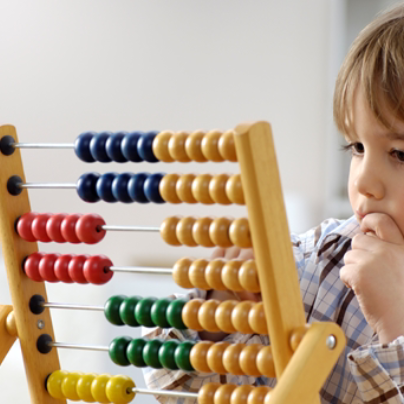
The Math materials allow the children to have a sensorial experience of the abstraction that is mathematics, allowing them to store concepts so that when the time comes to deal exclusively in abstract terms, the understanding is already there. Every piece of material isolates one concept, which integrates to form the basis for a further step in the child’s understanding of mathematics.
Early Math begins with a concrete, physical exploration of numeracy through beautiful manipulatives and materials.
The Montessori math materials are perhaps some of the most inviting and beautiful works in the Montessori classroom. Visitors to our Montessori classroom, young and old alike, gravitate to the math shelves, wanting to touch and learn how to use the materials. “Show me this. How does this work?” they ask. Adults usually sigh and wistfully say, “I wish I had learned math this way”.
Montessori math is the best possible foundation your child can get for being comfortable and competent in the world of numbers. These are an ingenious set of materials that progress gradually from concrete to abstract. In contrast to most other programs, which introduce math in a rather abstract way, Montessori math begins with concrete materials, and then slowly progresses towards abstraction. For example, students learn about the decimal system with the Golden Bead material, which contains single beads for units, ten-bars of beads for tens, a square of a hundred beads for one hundred, and a cube of a thousand beads for one thousand. Initially, children add or subtract big numbers with these beads, but over time other materials – the Stamp Game, the Dot Game, the Small and Large Bead frame – enable children to progress to abstract, paper-and-pencil math.
In a mainstream school children start with small numbers and slowly work their way up to bigger numbers—up to 30 in Kindergarten, up to 100 in 1st grade, up to 1,000 in 2nd grade and so on. In contrast, in Montessori, we begin by introducing large numbers, all the way to 10,000 by age five or six, and all the way into the millions and beyond in the early elementary years. As Dr. Montessori observed, children are interested in big numbers, big problems and with these unique materials, we can harness that interest into advanced, early math accomplishments.
Copyright @ vrikshapatashala - 2024. All rights reserved.
Website By SEARCHNSCORE